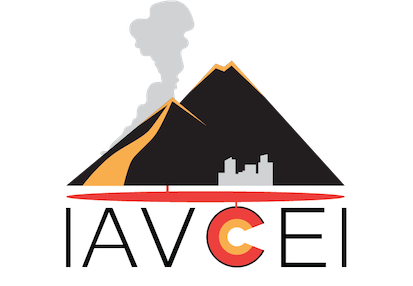Cari Colleghi e Amici,
ricordando che la data di scadenza per l'iscrizione alla prossima COV11 Conference in Heraklion (Crete, 23-27 May 2020) è fissata al 2 febbraio, vorremmo portare alla vostra attenzione la seguente sessione, al fine della sottomissione di un contributo:
S1.12 "PDCs Transport and emplacement mechanisms: insight from field, experimental and modelling studies".
Conveners: Alessandra Pensa, Benjamin Andrews, Gert Lube, Matteo Cerminara & Michael Ort
Pyroclastic density currents (PDCs) are among the most hazardous of all volcanic processes. These currents can rapidly disperse volcanic material overlarge areas presenting substantial threats to life and property. PDCs can also generate buoyant plumes of ash (co-ignimbrite) that endanger aviation and result in downwind ashfall hazards. Despite our knowledge of the stratigraphic and sedimentological characteristics of PDC deposits, and the recent advances in laboratory experiments, our comprehension about the flow and emplacement dynamics of these gravity-driven flows is still incomplete. Ongoing studies focus on characterizing physical properties (such as velocity, particle concentration,temperature, and grain-size distribution), and how those properties evolve through time and space, and how they are affected by topography and other external parameters.
Consequently, detailed descriptions of physical and textural properties of volcanic deposits, and physics-based numerical and analogue experiments must be used together to improve the knowledge of the phenomenon and our conceptual models of PDCs transport and emplacement dynamics. Ultimately, such models aim to improve volcanic hazard assessment and forecasting.This session aims to gather multidisciplinary contributions (such as field surveys,rock magnetic analysis, numerical models, and laboratory experiments) to investigate internal (dynamic pressure, thermal state, fluid turbulence conditions, granulometry, depositional rate) and external (morphological characteristics,topography confinement, slope angle) conditions of PDCs that potentially affect their energy dissipation, transport mechanisms and depositional behaviour.
Core connection between the proposed session and societal risk mitigation: High-speed,gravity-driven flows of hot particles and gas represent a highly destructive product of explosive volcanism. Despite the numerous historical cases of fatalities provoked by hot gas and ash mixture flows (e.g. Mont Pelée 1902, El Chichón 1982, Soufrière Hills 1997, Mount Unzen 1991, Fuego 2018 eruptions), increasing numbers of people live in the pyroclastic flow paths of active volcanoes. Due to the elevated vulnerability of these populated areas, in terms of human losses and economic damages, we are proposing this session to highlight the importance of a better understanding of the physical processes involved during PDC transport and emplacement. The multidisciplinary approach will contribute to PDC risk mitigation with the development of advanced numerical and analogue models reproducing and simulating probable future events and, therefore, more detailed hazard maps as outputs.
ricordando che la data di scadenza per l'iscrizione alla prossima COV11 Conference in Heraklion (Crete, 23-27 May 2020) è fissata al 2 febbraio, vorremmo portare alla vostra attenzione la seguente sessione, al fine della sottomissione di un contributo:
S1.12 "PDCs Transport and emplacement mechanisms: insight from field, experimental and modelling studies".
Conveners: Alessandra Pensa, Benjamin Andrews, Gert Lube, Matteo Cerminara & Michael Ort
Pyroclastic density currents (PDCs) are among the most hazardous of all volcanic processes. These currents can rapidly disperse volcanic material overlarge areas presenting substantial threats to life and property. PDCs can also generate buoyant plumes of ash (co-ignimbrite) that endanger aviation and result in downwind ashfall hazards. Despite our knowledge of the stratigraphic and sedimentological characteristics of PDC deposits, and the recent advances in laboratory experiments, our comprehension about the flow and emplacement dynamics of these gravity-driven flows is still incomplete. Ongoing studies focus on characterizing physical properties (such as velocity, particle concentration,temperature, and grain-size distribution), and how those properties evolve through time and space, and how they are affected by topography and other external parameters.
Consequently, detailed descriptions of physical and textural properties of volcanic deposits, and physics-based numerical and analogue experiments must be used together to improve the knowledge of the phenomenon and our conceptual models of PDCs transport and emplacement dynamics. Ultimately, such models aim to improve volcanic hazard assessment and forecasting.This session aims to gather multidisciplinary contributions (such as field surveys,rock magnetic analysis, numerical models, and laboratory experiments) to investigate internal (dynamic pressure, thermal state, fluid turbulence conditions, granulometry, depositional rate) and external (morphological characteristics,topography confinement, slope angle) conditions of PDCs that potentially affect their energy dissipation, transport mechanisms and depositional behaviour.
Core connection between the proposed session and societal risk mitigation: High-speed,gravity-driven flows of hot particles and gas represent a highly destructive product of explosive volcanism. Despite the numerous historical cases of fatalities provoked by hot gas and ash mixture flows (e.g. Mont Pelée 1902, El Chichón 1982, Soufrière Hills 1997, Mount Unzen 1991, Fuego 2018 eruptions), increasing numbers of people live in the pyroclastic flow paths of active volcanoes. Due to the elevated vulnerability of these populated areas, in terms of human losses and economic damages, we are proposing this session to highlight the importance of a better understanding of the physical processes involved during PDC transport and emplacement. The multidisciplinary approach will contribute to PDC risk mitigation with the development of advanced numerical and analogue models reproducing and simulating probable future events and, therefore, more detailed hazard maps as outputs.

